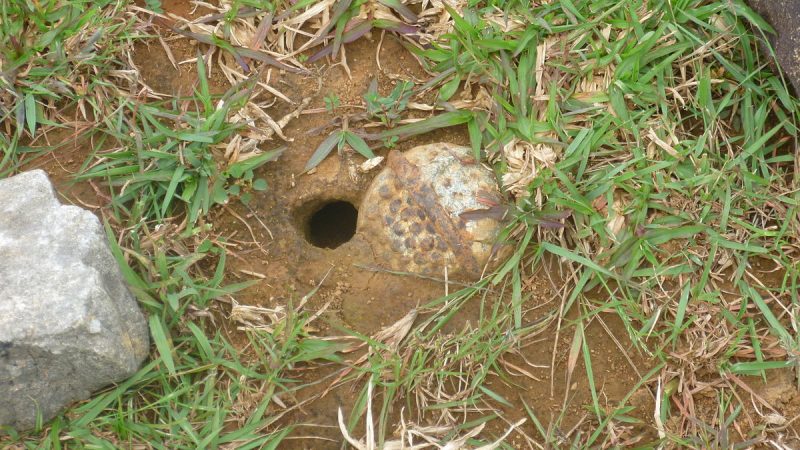Laos is the most heavily-bombed country in history. Today, over forty years after the US stopped dropping those bombs, there are millions of unexploded armaments remaining.
President Barack Obama became the first sitting US president that visited Laos. He promised to double funding for education to teach citizens about the dangers about the bombs and to help clear the rest of those bombs away.
“Given our history here, I believe the United States has a moral obligation to help Laos heal,” Obama said when he announced $90 million in U.S. commitments over three years.
There is an exhibit in downtown Vientiane. In the exhibit, dozens upon dozens of round “bombies” the size of tennis balls hang from the ceiling. Bombies are the local lingo for submunitions that are ejected from a larger cluster bomb.
These bombies are left over from the Vietnam War, which spilled over into Laos. It is estimated that 30% of the bombs dropped by the US did not explode. They are still causing problems to this day.
“Laotians are still being injured by the bombs, until now,” says BaosavanhVetsaboun, a staffer at the nonprofit COPE. COPE is an organization that helps those who have lost limbs to unexploded ordinance (UXO).
On the other side of the exhibit, a pile of wooden prosthetic legs sits. Bombing survivors donated them after using them. It’s a testament to the legacy of America’s “secret war” in Laos.
The secretive bombing raids from 1964 to 1973 were mostly aimed at the Ho Chi Minh trail, which the North Vietnamese were using to move into the South through Laos and Cambodia.
American warplanes dropped a bomb load an estimated once every eight minutes. The unexploded bombs are responsible for around 40 casualties per year.
“All it takes is heat, shock, and friction for something to be volatile and explode. When you think about the fact these things were dropped from the air, they’ve experienced all those things, not to mention the fact they’ve been sitting in the ground 40 years, deteriorating, which makes them even more volatile,” says Emma Atkinson, who works on U.S. State Department programs and funding in regards to clear unexploded bombs in Laos.
The US funds will go to organizations like Mines Advisory Group (MAG) International. MAG is a non-profit group that educates people about bombs and helps them destroy the munitions safely.
MAG technicians search for the bombs and use controlled detonations to “destroy the bombs, and to make this region farmable and safe again,” says Rhea. “If you speak to any parents there, they would say their biggest fear is about their children being involved in accidents.”
Maiyer Rhao, 15, was at the National Cultural Hall to hear Obama speak. When he was asked about the troubles between the two nations, she said, “I don’t know about other people, but I think the past is the past.”
